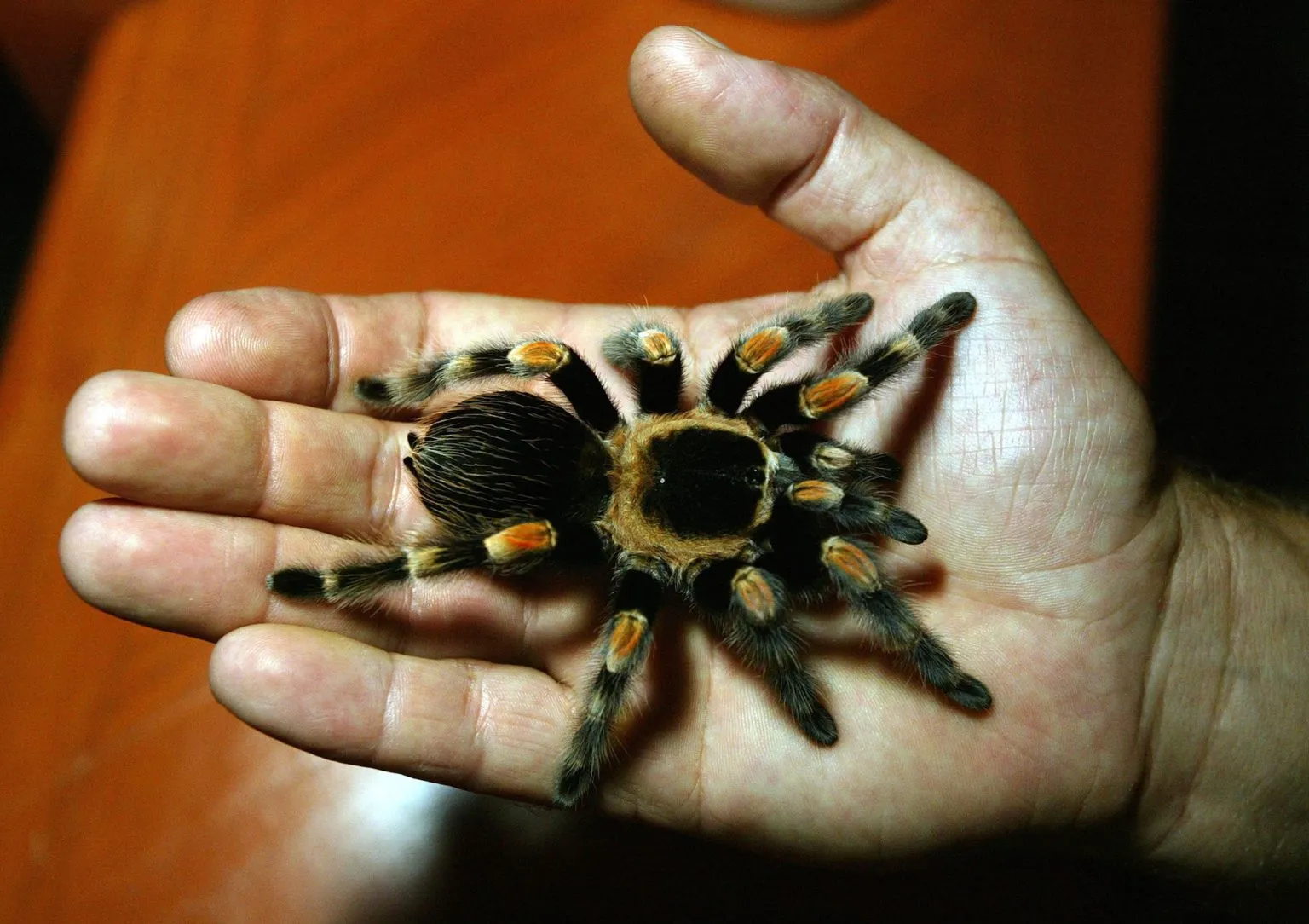Tarantula Venom Overview
Tarantulas, large and often hairy spiders, are a source of fascination and, sometimes, fear. Their size and appearance can be intimidating, leading many to wonder about the danger posed by their venom. While tarantulas possess venom, it’s essential to understand its composition, effects, and the actual risks associated with a bite. The perceived danger often stems from the spider’s imposing size and the myths surrounding spider bites. However, the reality is often less dramatic than the fear. This article will delve into the specifics of tarantula venom, its impact on humans, and what to do if bitten, providing a clear and factual understanding of the risks.
What Is Tarantula Venom Made Of
Tarantula venom is a complex mixture of various substances designed primarily for subduing prey. Understanding its composition is key to assessing its potential effects. The primary components include enzymes, proteins, and neurotoxins, each playing a specific role in the venom’s overall impact. These substances work synergistically to immobilize and, in some cases, begin the digestive process of the tarantula’s food. The exact composition can vary depending on the tarantula species, but the fundamental components remain consistent.
Enzymes and Proteins

Enzymes and proteins form a significant portion of tarantula venom. These components are responsible for breaking down tissues and aiding in the digestion of prey. While the specific enzymes vary, they typically include proteases, which break down proteins, and hyaluronidases, which help to spread the venom throughout the victim’s tissues. These enzymes contribute to the local effects of a bite, such as pain, swelling, and tissue damage. The concentration and types of enzymes present can influence the severity of the bite’s impact.
Neurotoxins and Their Effects
Neurotoxins are another critical component of tarantula venom. These substances primarily affect the nervous system, leading to paralysis in the tarantula’s prey. The neurotoxins found in tarantula venom act on ion channels, interfering with the transmission of nerve signals. This can cause muscle spasms, paralysis, and other neurological symptoms. While the neurotoxins in tarantula venom are not typically potent enough to be lethal to humans, they can cause discomfort and, in rare cases, more severe reactions, especially in individuals with allergies or sensitivities.
How Tarantula Venom Affects Humans
The effects of tarantula venom on humans are generally less severe than many people assume. The majority of bites result in localized symptoms similar to a bee sting. However, the severity can vary based on several factors, including the species of tarantula, the amount of venom injected, and the individual’s sensitivity. It’s crucial to distinguish between the common local effects and the rare, more serious systemic reactions. Understanding the potential impacts can help individuals react appropriately if bitten.
Local Effects of a Tarantula Bite

The most common effects of a tarantula bite are localized to the bite site. These effects are usually mild and resolve within a few days. The immediate sensation is often a sharp, stinging pain, similar to a wasp or bee sting. This initial pain is often followed by other localized symptoms that may include redness, swelling, and itching. These reactions are a result of the venom’s enzymes and proteins, which cause inflammation and tissue irritation. The severity of these local effects can vary, but they are generally not life-threatening.
Pain and Swelling
Pain is a common initial symptom of a tarantula bite, often described as a sharp, stinging sensation. The intensity of the pain can vary depending on the individual and the specific species of tarantula. Following the initial pain, swelling typically develops around the bite site. This swelling is a result of the body’s inflammatory response to the venom. The affected area may become noticeably larger, and the swelling can be accompanied by warmth and tenderness.
Redness and Itching
Redness and itching are also common local effects of a tarantula bite. Redness, or erythema, appears as the blood vessels dilate in response to the venom, causing the skin around the bite to appear flushed. Itching, or pruritus, is often a result of the body’s histamine response to the venom and the resulting inflammation. The itching can range from mild to moderate, and scratching the bite can worsen the irritation and potentially lead to secondary infections.
Systemic Effects and Allergic Reactions

While local effects are common, systemic effects from a tarantula bite are rare. Systemic effects involve the body as a whole, and can be more serious. Allergic reactions, which can range from mild to severe, are the most common type of systemic response. These reactions occur when the immune system overreacts to the venom’s proteins. It’s essential to monitor for symptoms beyond the bite site, such as hives, difficulty breathing, or dizziness, which may indicate a more severe reaction.
Rare Systemic Symptoms
In extremely rare cases, more severe systemic symptoms may occur after a tarantula bite. These can include muscle cramps, nausea, vomiting, and, in very rare instances, more serious neurological effects. These symptoms are not typical, and their presence usually indicates a stronger reaction or an allergic response. If you experience any of these symptoms, it is essential to seek immediate medical attention.
Allergic Reactions and Anaphylaxis
Allergic reactions to tarantula venom are possible, and in severe cases, can lead to anaphylaxis, a life-threatening condition. Symptoms of an allergic reaction include hives, swelling of the face or throat, difficulty breathing, and dizziness. Anaphylaxis requires immediate medical treatment, including the administration of epinephrine. If you suspect you or someone else is experiencing an anaphylactic reaction, seek immediate medical help.
Severity Factors and Variables

Several factors can influence the severity of a tarantula bite. These include the species of tarantula, the size and age of the spider, and the amount of venom injected. Understanding these variables can provide insight into the potential risks associated with a bite. It’s important to consider these factors when assessing the potential impact of a tarantula bite.
Species of Tarantula
The species of tarantula plays a significant role in the severity of a bite. Some species have more potent venom than others. The geographical origin and the specific evolutionary adaptations of the tarantula can influence the composition and potency of its venom. For example, tarantulas from certain regions might have evolved more potent venom to subdue larger prey. Research on specific species can provide valuable insights into the potential risks associated with their bites. It is also important to note that some tarantulas are more defensive than others and more likely to bite when threatened.
Size and Age of the Tarantula
The size and age of the tarantula can also influence the amount of venom injected. Larger, more mature tarantulas generally possess more venom than smaller, younger ones. The quantity of venom injected during a bite can directly affect the severity of the symptoms. A juvenile tarantula might inject a smaller dose of venom, leading to milder effects compared to a bite from a fully grown adult. Therefore, it’s crucial to consider the size and age of the spider when evaluating the potential risks associated with a bite.
Amount of Venom Injected

The amount of venom injected during a bite can vary, and this is a critical factor in determining the severity of the effects. The tarantula controls the amount of venom it injects, and this can depend on factors such as the perceived threat and the spider’s defensive behavior. Some bites may involve a minimal amount of venom, while others may involve a larger dose. The volume of venom injected directly influences the intensity of the symptoms, with larger doses potentially leading to more pronounced local and systemic reactions.
First Aid and Treatment
Knowing the appropriate first aid and treatment steps is crucial in the event of a tarantula bite. Immediate care can help reduce the severity of symptoms and prevent complications. In most cases, the treatment focuses on alleviating the local effects, but it’s important to recognize when medical attention is necessary. Prompt and proper care can significantly improve the outcome of a tarantula bite.
Immediate Care for a Tarantula Bite
If bitten by a tarantula, the first step is to remain calm. Wash the bite area thoroughly with soap and water to help prevent infection. Apply a cold compress to the bite site to reduce pain and swelling. Elevating the affected limb can also help minimize swelling. It is important to avoid squeezing or attempting to suck out the venom, as this is not an effective treatment. Observe the bite site and monitor for any signs of a severe reaction, such as difficulty breathing, dizziness, or swelling of the face or throat.
When to Seek Medical Attention

It’s important to seek medical attention if you experience any signs of a severe reaction or if your symptoms worsen. Symptoms such as difficulty breathing, chest pain, severe swelling, or dizziness require immediate medical care. If the bite site shows signs of infection, such as increased redness, warmth, pus, or fever, medical attention is also necessary. Anyone with a history of allergies or sensitivities should seek medical evaluation after a tarantula bite to ensure prompt and appropriate treatment. Consulting with a healthcare professional is essential to address any concerns and ensure proper care.
Long-Term Effects and Complications
While most tarantula bites do not result in long-term complications, some potential issues can arise. Understanding these risks can help individuals to take appropriate precautions and seek medical care when necessary. The primary concerns include the potential for infection at the bite site and the psychological impact of the bite experience.
Potential for Infection
The bite site is susceptible to infection, particularly if the skin is broken or scratched. Symptoms of infection include increasing redness, warmth, swelling, pain, and the presence of pus. It is essential to keep the bite site clean and monitor it for any signs of infection. If an infection develops, seek medical attention immediately. Antibiotics may be necessary to treat bacterial infections, and prompt treatment can prevent the infection from spreading.
Psychological Impact

Being bitten by a tarantula can be a frightening experience, and it can have a psychological impact on the individual. Fear, anxiety, and even post-traumatic stress symptoms are possible, particularly if the bite experience was severe or unexpected. Talking to a mental health professional can help in managing these psychological effects. Cognitive behavioral therapy (CBT) and exposure therapy can be effective in addressing spider-related phobias and reducing anxiety. Seeking support and discussing the experience can help individuals cope with the emotional aftermath of a bite.
Conclusion
In conclusion, while tarantula venom does pose a risk, the danger is often overstated. The majority of tarantula bites result in mild, localized symptoms, similar to a bee sting. The severity of a bite depends on various factors, including the species, the amount of venom injected, and individual sensitivity. Understanding the composition of tarantula venom, recognizing the potential effects, and knowing the appropriate first aid and treatment steps are crucial. While the fear of tarantulas is understandable, a clear understanding of the facts can help alleviate unnecessary anxiety and ensure appropriate responses to bites. Always seek medical attention if you experience severe symptoms or have concerns about a bite.
